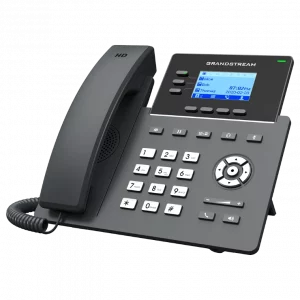
Pricing for SIP Can be Confusing. Here are the Basics.
 Determining the cost to switch to SIP trunking for your business communication needs can be confusing. Those of us in the industry tend to use terms that are not familiar to people who don’t think about SIP for a living. Sometimes, even vendors use the wrong terms which makes matters even worse. We thought we’d take a few minutes to outline the basic components that make up pricing for SIP and define the related terms. Hopefully it will make it easier for you to calculate the initial and ongoing fees for your company.
Determining the cost to switch to SIP trunking for your business communication needs can be confusing. Those of us in the industry tend to use terms that are not familiar to people who don’t think about SIP for a living. Sometimes, even vendors use the wrong terms which makes matters even worse. We thought we’d take a few minutes to outline the basic components that make up pricing for SIP and define the related terms. Hopefully it will make it easier for you to calculate the initial and ongoing fees for your company.
SIP Trunks and SIP Channels
Much of the confusion about pricing for SIP begins with these two terms. People often use them interchangeably, but they are not the same. A SIP trunk is simply the connection between your phone system and the public switched telephone network. Think of it as a tunnel for a highway. A SIP channel is the capability to support one incoming or outgoing call. You can think of SIP channels as the lanes for your highway. Each call takes up exactly one lane. Because a SIP trunk can hold an unlimited number of channels, you only need one SIP trunk. The number of channels you need will depend on how many concurrent calls your business tends to make. SIP channels are sometimes called sessions, lines or concurrent calls. They are similar in practice to a traditional telephone line.
In terms of pricing, most vendors, including SIP.US, don’t charge for the trunk. The monthly fee is based on the number of channels you require. Most businesses don’t need a channel for every employee because it is unusual for all employees to be on the phone at the same time. Depending on the nature of our business, you may need as few as one channel for every 3 or 4 employees. Of course, if you have a call center or other heavy telephone use you may need more. If employees or callers complain about busy signals, you likely need to increase the number of SIP channels.
Unlimited Calling Plans
Another term that can introduce confusion into SIP pricing is the use of the term “Unlimited.” As we said earlier, SIP trunks are sometimes called unlimited because they can support any number of SIP channels. Without the channels, however the SIP trunk isn’t useful. “Unlimited” is also used to describe the calling plans offered by SIP.US and other vendors. This means that we do not charge based on usage for calls to the lower US 48 states and parts of Canada. As long as you are calling those areas, you will pay only your monthly fee for each SIP channel and no additional long distance charges regardless of how many calls you make or how long you talk. Calls to other parts of the world are charged based on the per-minute rate for that location.
DID Fees
If you need direct inward dialing (DID), so that each employee, or certain employees can be reached with unique 10 digit number, rather than a main number plus an extension, there will usually be a minimal additional monthly fee for each DID. The fee, in the case of SIP.US, is a nominal $1.00 per month for US numbers.
Nomadic e911
Nomadic e911 is a very important service that enables users to set any address in the United States as the address to be transmitted to the nearest Public Safety Answering Point (PSAP) when a call is placed to 911. Land line numbers do this automatically, but digital lines need to be set up for this service. This is essential so that emergency responders can get where they are needed fast. There is usually a small monthly fee associated with this service for each number.
Set Up Costs
There will be some initial set up fees for SIP trunking. This generally includes a fee for each SIP channel, and each DID. If you will be moving your current phone numbers to your SIP trunk, there will also be a porting fee for each number that you wish to retain.
Taxes and Regulatory Fees
Of course SIP services are not exempt from government taxes and fees. Specifically, the Federal Universal Service Fund (USF), helps to insure that first-class, affordable telecommunications services are available to customers in all parts of the country, especially rural areas where providing service would not otherwise be profitable to telecom carriers. The Fund also provides discounted communications services for certain healthcare facilities, schools and libraries. All telecommunications providers are required to pay into the Federal USF, and their contributions are routinely passed along to customers. The fee is a percentage based on a contribution factor announced by the FCC and is subject to modification by the FCC.
These are the typical costs associated with deploying SIP. Hopefully this has helped solidify your understanding of what to expect. As always, please feel free to let us know if you have any questions.



